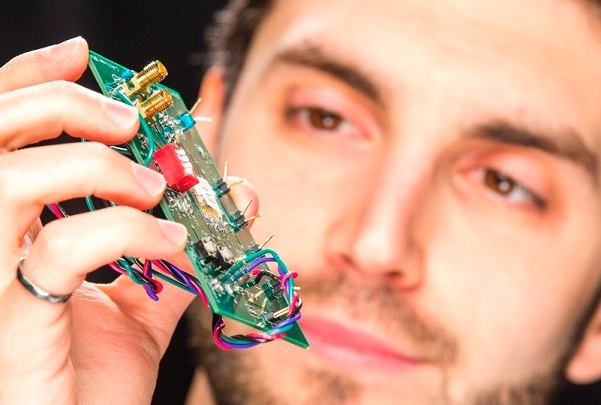By Malcolm McLean
Chris Williams, a graduate student in electrical engineering, was the first in his family to go to university. When he finished high school, “I took a shot in the dark. I went to Dawson College’s electrotech program. I thought I would get a diploma, and go
to work.”
Dawson helped him develop a practical approach to technology: “My teachers instilled a method of troubleshooting that takes into account real-world situations… also an intuition for circuit design and testing.”
After Dawson, Chris found that the jobs he came across were not stimulating enough. “They were about implementing specific, narrow tasks. I wanted to look deeper.”
But the path from technology to engineering was not smooth. “When I started my first year at Concordia, I hit a wall, going from completely hands-on work that I excelled at to more theoretical courses that I didn’t have the math for.” Discouraged, he was ready to quit and become an electrician, but over the summer he became immersed in reading physics.
“Particle physics lit the fire again. I went back into my second year strong, near the top of the class, understanding the material and enjoying it.”
“Coming from a technical program, I found labs to be my strength. Those from the pure and applied sciences have this perspective that electronics is mathematics in action, a view that I began to appreciate.”
Chris thrived in his second year and never looked back. While still an undergraduate student, he had the opportunity through Concordia’s Institute for Cooperative Education to participate in the summer Industrial Experience (INEX) program, completing an internship at Microbridge Technologies Inc.
In his third year mini-Capstone project he was the hardware designer for a sumo robot project. He then met Glenn Cowan, associate professor of electrical engineering, “a charismatic teacher who made learning fun.” Cowan suggested a Capstone project dedicated to designing, fabricating and assembling an integrated circuit FM receiver, a difficult task for the eight month project. “That was the high point of my undergraduate program.”
Cowan suggested a master’s degree, and Chris once again “took a shot in the dark”. In fact, he finished his master’s early, with a method for dynamically trading off power and noise in a phase-locked loop for variable data rate applications. “We implemented that in 65nm technology. It
was very awesome, we had to use a high powered microscope just to see its outline.” As a teacher’s assistant, unsurprisingly, Chris feels most at ease as a lab demonstrator.
For his PhD, Chris is working with Odile Liboiron-Ladouceur, assistant professor of engineering at McGill and Canada Research Chair in photonic interconnects, who is his co-supervisor with Cowan. With a major scholarship from the Fonds de recherche du Québec - Nature et technologies and support from the Canadian government’s NSERC SiEPIC program (Silicon Electronic-Photonic Integrated Circuits), he is working on short-reach optical receivers for communication, merging the areas of integrated photonics and electronics.
On a roll with his PhD program, and freshly back from an internship at Tyndall National Institute in Ireland designing high-speed analog circuits, Chris reflects that he never planned or expected to get this far in university. “I’m having fun! I don’t like to leave at the end of the day.”
